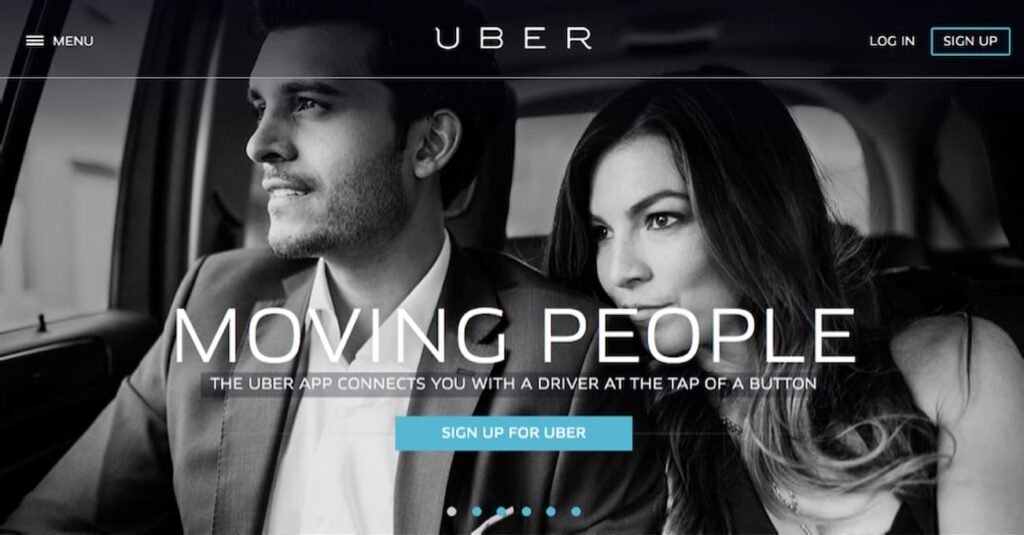Ever feel like your brand is shouting into a void? You've got a great product, a solid marketing budget, and a sleek website, but somehow, your message just isn't sticking.
You're not alone. In today's crowded market, just having a great product isn't enough. If your brand doesn't say the right things to the right people, and in the right way, it might as well be invisible.
That's where brand positioning and messaging come in. When done right, they not only transform a product from just another option into the only option that matters to your ideal customers; they also shape brand perception, influencing how your audience feels about and remembers your brand.
In this guide, we're going to walk through what brand positioning and messaging really mean, why they're more important than ever, how to craft them, how to test and refine them, and how the world's top brands get it so right.
Let's dive in.
Understanding Brand Positioning and Messaging
Brand messaging and positioning are two sides of the same coin, but each plays a unique role in shaping how your brand connects with its audience.
At the heart of successful marketing lies the ability to be seen, understood, and remembered, and it all starts with how you position and message your brand.
What is Brand Positioning?
Brand positioning is how your brand stands out in the market, occupying a unique space in the minds of your customers. It's more than just differentiating from competitors; it's about defining what makes your brand special, what problems it solves, and why it matters to your target audience.
When positioning your brand, think of it as the strategic foundation. It's where your brand sits in relation to others in the market. A strong position helps you communicate your unique value and why it matters to the customer.
What is Brand Messaging?
Brand messaging is the voice you use to communicate your positioning. It's how you speak to your audience, what you say, and the emotional triggers you use to resonate with them.
Messaging is the tactical execution of your positioning; the language, tone, and key ideas that build and reinforce your brand's identity. It tells your audience exactly what they need to hear in a way that sticks with them.
Here's how they work together:
| Brand Positioning | Brand Messaging |
| The strategic foundation | The tactical execution |
| Defines your unique space | Communicates that uniqueness |
| Based on the target audience & competitors | Based on tone, channels, and key messaging points |
Without clear positioning, messaging falls flat. Without strong messaging, positioning stays buried.
Why Positioning and Messaging Matter More Than Ever
In today's world, consumers are bombarded with endless choices and content. Whether they're scrolling through social media, browsing online stores, or reading emails, they are constantly processing information at lightning speed. In this crowded landscape, clear brand positioning and messaging aren't just important, they're your sharpest competitive weapons.
The truth is, in a market where attention spans are shrinking and decision-making is increasingly influenced by quick, gut reactions, how you position your brand and communicate your message can mean the difference between success and being lost in the noise.
Here's why positioning and messaging matter more than ever:
- They create instant clarity. Customers don't want to guess what you offer, they want to get it fast. Effective brand positioning ensures your audience knows exactly what you do and why it matters within seconds of encountering your brand.
- They build trust and consistency. The right message, when repeated consistently, creates a sense of familiarity. This familiarity builds trust over time, making your brand feel reliable and dependable.
- They drive differentiation. Especially in saturated markets, your positioning helps you stand out and be memorable. With clear and compelling messaging, you can communicate exactly what makes your brand unique, ensuring your audience knows why they should choose you over your competitors.
- They guide all marketing efforts. From advertisements to emails and social media posts, consistent messaging keeps all your marketing channels cohesive. With a strong foundation of positioning, everything you create, share, or promote ties back to your core message, reinforcing your brand's identity across the board.
- They help foster loyalty. Customers are more likely to return to a brand that consistently communicates a clear, compelling message. When your messaging aligns with your audience's values and needs, it strengthens the emotional bond and encourages long-term loyalty.
- They attract the right audience. Clear messaging ensures that you're speaking to the right people. By positioning your brand effectively, you can attract an audience that resonates with your offerings, improving conversion rates and customer satisfaction.
If your audience doesn't understand who you are, what you offer, and why it matters to them they'll move on to someone who made it clearer. In today's competitive world, ambiguity is a luxury you can't afford.
How to Build Effective Brand Positioning and Messaging
Building strong brand message positioning is an ongoing process that requires strategic planning and execution. By following this step-by-step approach, you can craft a compelling brand position that resonates with your target audience:
1. Let Go of Preconceived Notions
Start fresh by setting aside assumptions about your brand, product, and audience. Keep an open mind to creativity and new perspectives in your approach. This step is essential because innovative positioning requires thinking beyond existing frameworks or assumptions. Be ready to adapt and experiment with new ideas to truly stand out.
2. Identify Your Unique Value
What makes your product different? Define the core value that sets your product apart and frame this uniqueness in terms of how it addresses a specific customer need or problem. Focus on the customer benefits, not just the features of your product. For example, if you're selling a skincare line, emphasize how your ingredients improve skin health, not just that they're organic.
3. Understand Your Audience
Identify the key demographics, behaviors, and psychographics of your ideal customers. Use data from surveys, social media, customer feedback, and Voice of Customer (VoC) insights to create detailed buyer personas. This ensures your messaging resonates deeply with your audience.
You can also use Usage and Attitude (U&A) research to gain insights into how customers use your product, their attitudes toward it, and the challenges they face. This data helps refine your messaging and ensures it speaks directly to their needs and desires.
Example: If your target audience is busy professionals, your product positioning and messaging might highlight the convenience and time-saving benefits of your product.
4. Position Your Product in the Market
Define the category your product fits into and establish its role within that category. This provides context and helps customers understand its relevance. Positioning your product within an established category allows customers to quickly grasp its value. For instance, positioning your product as "premium" or "sustainable" within the fashion industry helps set clear expectations for the consumer.
5. Differentiate from Competitors
Analyze your competitors and identify gaps in the market. What makes your product stand out; innovation, quality, price, or experience? Clearly communicate why your solution is the best fit for your audience. This will help you define your unique selling proposition (USP) and differentiate yourself from the competition.
Example: A coffee brand that focuses on ethical sourcing and sustainability can differentiate by emphasizing its commitment to environmental impact and fair wages for farmers.
6. Craft a Clear and Concise Positioning Statement
Now it's time to craft your positioning statement, the foundation of your brand's messaging. It should clearly articulate:
- Target Audience: Who is your product for?
- Customer Need: What specific problem or need does your product address?
- Solution: How does your product solve this problem?
- Differentiation: What makes your product stand out from competitors?
- Value: What core benefit does your product deliver to the customer?
Example Template:
"For [target audience], [product] is the [category] that provides [key benefit] because [unique differentiator]."
This positioning statement will guide all your messaging and product marketing efforts.
7. Test and Refine Your Positioning
Testing is a crucial part of refining your brand positioning. Gather feedback through surveys, A/B testing, and interviews to understand how your audience perceives your brand. Use insights to adjust your messaging and continuously refine your approach to ensure it resonates with the right people.
Methods for Testing and Refining Your Positioning & Messaging
Effective brand positioning and messaging need constant validation to ensure they're resonating with your audience. Testing helps you fine-tune your approach, ensuring your messaging is on point. Here's how to continually refine your messaging and positioning strategy:
- Why Testing Matters
Testing ensures that your audience fully grasps your message and aligns with your brand. It provides the following benefits:
- Confirms whether your audience understands your core message.
- Reduces the risk of launching with weak or confusing messaging.
- Informs creative decisions for more effective campaigns.
- Methods for Testing Your Positioning & Messaging
To test your brand's positioning, use these strategies:
- A/B Testing: Experiment with different headlines, value propositions, and calls to action on ads and landing pages.
- Surveys and Focus Groups: Collect direct feedback from customers about how well your messaging resonates.
- Social Media Insights: Use engagement metrics and comments to see how your message is received.
- Product Sampling and Real-World Feedback: Tools like Peekage let you test messaging in real consumer environments, blending feedback with actual product use.
- Analyze & Iterate
Once you've gathered data, dive into your analytics to evaluate performance:
- Quantitative Feedback: Review metrics like open rates, click-through rates (CTRs), and conversion rates.
- Qualitative Feedback: Look at customer comments and survey responses to identify emotional or cognitive reactions.
- Refine Based on Insights: Tweak your copy, visuals, and value proposition. Double down on what resonates and adjust or eliminate what doesn't.
Testing isn't a one-time task. It's part of an ongoing cycle to ensure your brand's messaging evolves in line with customer expectations and market dynamics.
Refine Your Positioning with Peekage: Effective positioning starts with understanding how your audience thinks and feels. Peekage is a consumer insight platform that uses psychographic targeting to help brands test and refine messaging with the right consumers, so you can craft narratives that resonate, differentiate, and drive action.
Key Elements of Product Messaging
After refining your brand positioning and messaging, it's crucial to distill your product's core message into a clear, concise, and compelling format. Here are the six essential elements that will help ensure your messaging resonates effectively with your target audience across all touchpoints:
- Product Description: Summarize what your product is in five words or less. Keep it clear and to the point. Example: "Plant-based skincare for healthy skin."
- Headline: Craft a compelling headline that grabs attention immediately. This should convey both the purpose of your product (why it exists) and what it does. Example: "Transform Your Skin with Nature's Purest Ingredients."
- Subheadline: Hint at the problem your product solves. This is your chance to connect emotionally with your audience, showcasing the issue your product addresses. Example: "Tired of harsh chemicals in your skincare routine? Try something gentle and effective."
- Benefit/Outcome: Clearly state what your target buyer will achieve by using your product. This connects the features with the tangible results that matter to your customers. Example: "Achieve glowing, healthy skin with every use."
- Customer Testimonial: Add a testimonial from your ideal customer that reinforces your message. A well-placed testimonial adds credibility and helps potential customers visualize their own success. Example: "I've never felt better about what I put on my skin. It's transformed my routine."
- Features: List the features that make your product stand out. This is where you can highlight how your product meets your audience's needs. Example: "100% vegan, cruelty-free, and made with organic ingredients."
By incorporating these elements into your product messaging, you ensure clarity and consistency, while making your offering compelling and easy to understand.
Common Mistakes to Avoid in Brand Positioning and Messaging
When crafting your brand messaging and positioning, avoiding common pitfalls can save your brand from confusion and missed opportunities. Here are the key mistakes to watch out for:
a) Trying to Appeal to Everyone
Trying to resonate with everyone will often lead to no one feeling truly connected to your brand. It's tempting to broaden your appeal, but focusing on a specific audience allows you to tailor your messaging more precisely and forge stronger connections. Instead of casting a wide net, define your niche and speak directly to those who will benefit most from your product.
Action Tip: Narrow down your target audience by creating detailed buyer personas, focusing on their specific pain points, needs, and desires.
b) Inconsistent Messaging Across Channels
Inconsistent messaging across your brand's channels can damage trust and dilute your brand's identity. Whether it's your website, social media, or email campaigns, your messaging should be cohesive and reflect the same values, tone, and key messaging. Disjointed messaging confuses customers and undermines credibility.
Action Tip: Develop a messaging guide to maintain consistency across all platforms. This will ensure that your brand's voice remains unified, and it matters: maintaining a consistent brand presentation can increase revenue by up to 23%.
c) Focusing on Features Over Benefits
Customers are more interested in the outcomes they'll achieve rather than the technical specifications of your product. While features are important, they don't drive emotional connections. Focus your messaging on how your product or service will improve your customer's life or solve their problems.
Action Tip: Shift your messaging to emphasize how your product's benefits make life easier, better, or more enjoyable for your customers.
d) Skipping Competitor Analysis
Not understanding your competition leaves you in the dark about market trends and potential gaps you can exploit. By not analyzing competitors, you risk missing opportunities to differentiate your brand and highlight what sets you apart.
Action Tip: Regularly monitor competitors to understand their strengths, weaknesses, and customer sentiment. Use this knowledge to position your brand more effectively.
e) Forgetting Emotion
While logical reasoning can inform decisions, it's the emotional connection that ultimately drives conversions. Customers buy based on feelings; whether it's security, excitement, or empowerment. Neglecting the emotional aspect of your messaging can result in missed sales.
Action Tip: Infuse emotion into your messaging by focusing on the impact your product or service has on your customer's life, not just the functional benefits.
Real-World Example of Great Positioning & Messaging
It's easy to look at today's polished brand messaging and forget that even the biggest names started somewhere. In reality, the most effective positioning happens early, when clarity matters most. Let's take a look at how Uber nailed its messaging at launch, before it became a global brand.
Uber's Early vs. Later Messaging
When Uber launched, it wasn't a household name. Their first website was simple, even a bit clunky, but the positioning was spot-on: "Everyone's Private Driver." It was clear and direct and addressed a real customer concern: reliable transportation without owning a car. By anchoring their brand to something familiar (a private driver), they made a completely new concept feel safe and accessible.

Fast forward to today and their messaging is broader and more abstract, like "Moving people." That might work now because Uber is globally known, but in the early days, it would have created confusion.
Takeaway: If you're in an early stage, don't borrow vague high-level messaging from big brands. Start with clarity, solve a real problem, and make your value unmistakable.
Conclusion
Strong brand positioning and messaging aren't just nice to have, they're essential for cutting through noise, capturing attention, and building trust. When done right, they clearly communicate who you are, what you offer, and why it matters.
The process isn't one-and-done. It's a cycle of clarity, testing, and refinement. The more intentional you are about defining and communicating your value, the more your brand will resonate and convert.
Start with a strong foundation. Keep listening and keep adjusting. That's how brands win.
FAQs
Positioning is about where your brand sits in the market and how it's perceived. Messaging is how you communicate that position; your value proposition, tone, and language across touchpoints.
- It's easy to understand. No one asks "What do you mean?"
- It resonates with your ideal customers. They say "That's me."
- It aligns with your product experience. Customers feel the message matches the value.
- It makes you stand out. Customers can tell how you're different.
- It guides your marketing. It's the anchor for your messaging across platforms.
Absolutely. In fact, brand positioning is even more crucial for startups. It helps you stand out in a crowded market and build trust before you have wide recognition or social proof.
Revisit it whenever there's a major market shift, new competition, product evolution, or if you're struggling with audience engagement. At a minimum, review it annually to ensure it's still aligned.
Yes. As your product, audience, or market matures, your positioning may need to shift to stay relevant and competitive. Early-stage messaging often won't work at scale.
References
- A Simple Definition of Brand Positioning, The Branding Journal,
https://www.thebrandingjournal.com/2016/11/brand-positioning-definition/ - What is a perceptual product positioning map?, Product Marketing Alliance,
https://www.productmarketingalliance.com/what-is-a-perceptual-product-positioning-map/ - What is a buyer persona and how do you build one?, Olivine Marketing,
https://www.olivinemarketing.com/articles/positioning-messaging-and-copywriting - Everything you need to know to conduct a competitive analysis (plus template), Sprout Social,
https://sproutsocial.com/insights/competitive-analysis/




